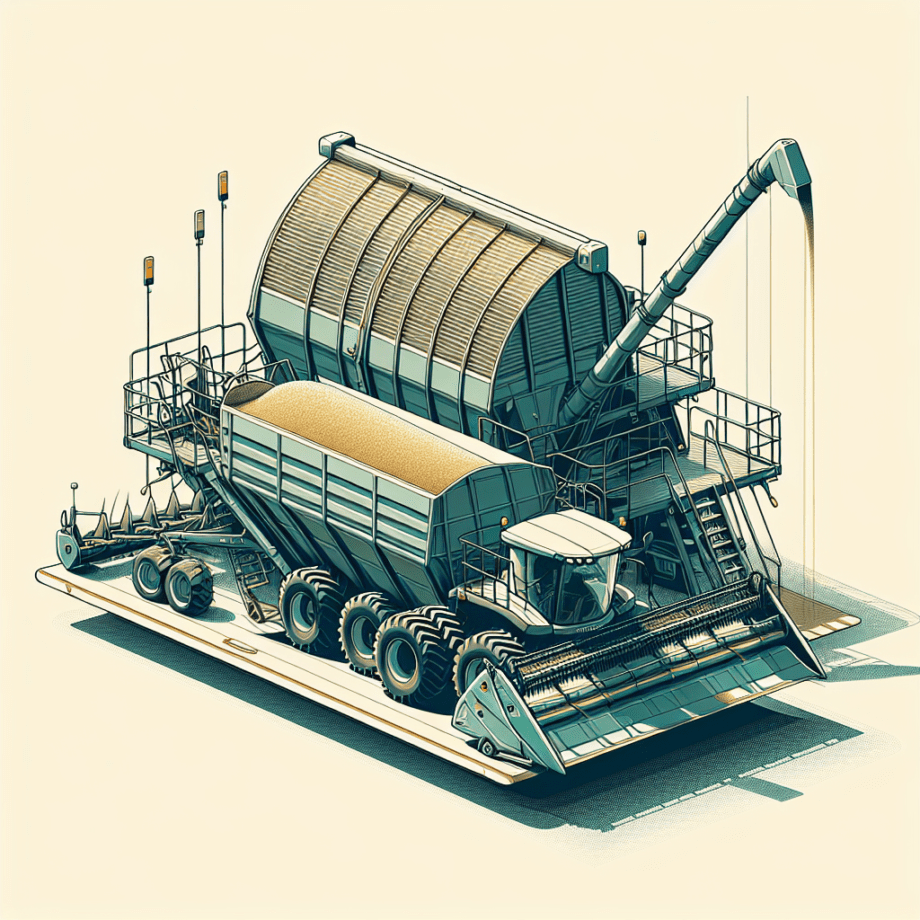Modern silage machinery has revolutionized the way farmers feed their livestock, offering unprecedented efficiency and quality in forage production. This article delves into the various types of silage machinery available today, their benefits, and how they contribute to sustainable farming practices.
Types of Modern Silage Machinery
Silage machinery encompasses a range of equipment designed to harvest, process, and store forage crops for livestock feed. The primary types of silage machinery include forage harvesters, balers, and silage wagons. Each type plays a crucial role in the silage-making process, ensuring that the feed is of high quality and readily available for livestock.
Forage Harvesters
Forage harvesters are essential for cutting and chopping forage crops such as corn, grass, and alfalfa. These machines come in two main types: self-propelled and pull-type. Self-propelled forage harvesters are highly efficient and equipped with powerful engines, allowing them to handle large fields quickly. Pull-type forage harvesters, on the other hand, are towed by tractors and are more suitable for smaller farms.
Modern forage harvesters are equipped with advanced features such as precision cutting mechanisms, adjustable chopping lengths, and automated controls. These features ensure that the forage is cut at the optimal stage of maturity, preserving its nutritional value and enhancing its digestibility for livestock.
Balers
Balers are used to compress and package forage into bales, making it easier to handle, transport, and store. There are several types of balers, including round balers, square balers, and silage balers. Round balers produce cylindrical bales that are easy to roll and stack, while square balers create rectangular bales that are more stable and easier to transport.
Silage balers are specifically designed for baling high-moisture forage, which is essential for producing high-quality silage. These balers often come with integrated wrapping systems that seal the bales in plastic, creating an anaerobic environment that promotes fermentation and preserves the forage.
Silage Wagons
Silage wagons, also known as forage wagons, are used to transport chopped forage from the field to the storage site. These wagons are equipped with unloading mechanisms that allow for quick and efficient transfer of forage into silos or bunkers. Modern silage wagons often feature high-capacity designs, durable construction, and automated unloading systems, making them indispensable for large-scale silage production.
Benefits of Modern Silage Machinery
The adoption of modern silage machinery offers numerous benefits to farmers, including increased efficiency, improved forage quality, and enhanced sustainability. These advantages contribute to the overall productivity and profitability of livestock farming operations.
Increased Efficiency
Modern silage machinery significantly reduces the time and labor required for forage harvesting and processing. Advanced features such as automated controls, precision cutting, and high-capacity designs enable farmers to complete silage-making tasks more quickly and with less manual effort. This increased efficiency allows farmers to focus on other important aspects of their operations, such as animal care and farm management.
Improved Forage Quality
The quality of silage is crucial for the health and productivity of livestock. Modern silage machinery ensures that forage is harvested at the optimal stage of maturity, preserving its nutritional content and palatability. Features such as adjustable chopping lengths and integrated wrapping systems help maintain the integrity of the forage, preventing spoilage and enhancing its digestibility.
High-quality silage leads to better animal performance, including increased milk production in dairy cows and improved weight gain in beef cattle. This, in turn, translates to higher profits for farmers and a more sustainable livestock farming operation.
Enhanced Sustainability
Sustainable farming practices are essential for the long-term viability of agriculture. Modern silage machinery contributes to sustainability by reducing waste, minimizing environmental impact, and promoting efficient use of resources. For example, precision cutting mechanisms reduce crop losses during harvesting, while integrated wrapping systems minimize spoilage and waste.
Additionally, the use of high-quality silage reduces the need for supplemental feed, lowering the overall feed costs and reducing the environmental footprint of livestock farming. By adopting modern silage machinery, farmers can achieve a balance between productivity and environmental stewardship.
Conclusion
Modern silage machinery plays a vital role in the efficient and sustainable production of livestock feed. The various types of silage machinery, including forage harvesters, balers, and silage wagons, offer numerous benefits that enhance the overall productivity and profitability of farming operations. By investing in advanced silage machinery, farmers can ensure high-quality forage for their livestock, leading to better animal performance and a more sustainable agricultural future.
